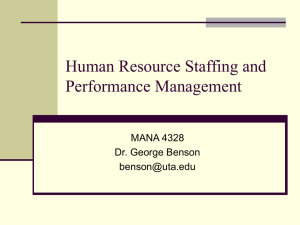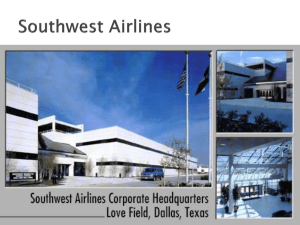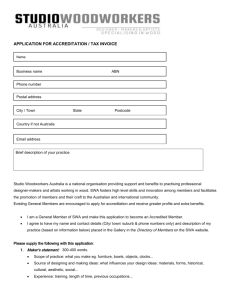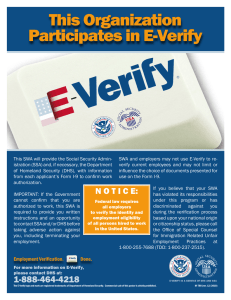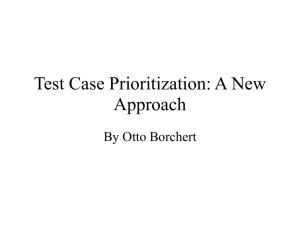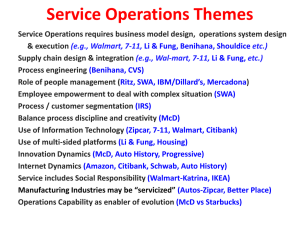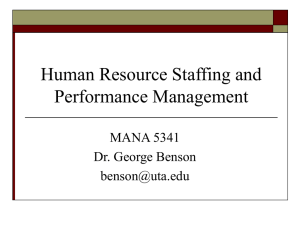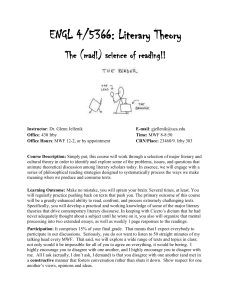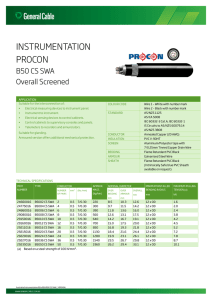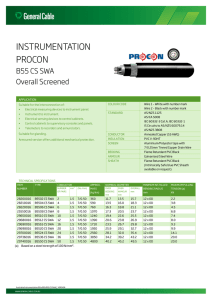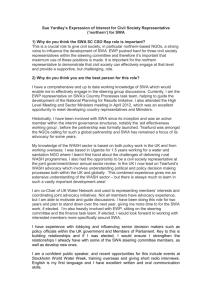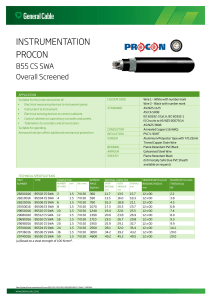LM1: Southwest Airlines Operatin Model
advertisement
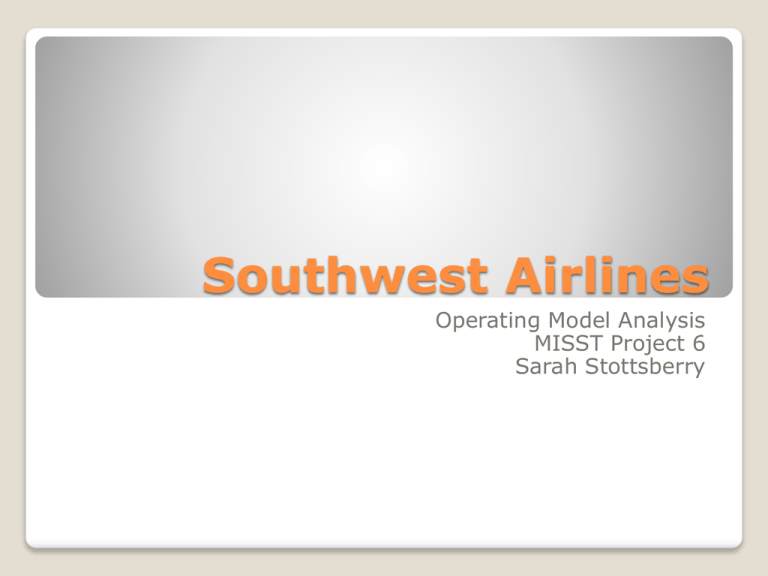
Southwest Airlines Operating Model Analysis MISST Project 6 Sarah Stottsberry Largest U.S. Airline in terms of Passengers Flown 32,000 Employees Based in Dallas Texas Corporate Structure ◦ ◦ ◦ ◦ ◦ ◦ ◦ ◦ ◦ ◦ ◦ ◦ ◦ ◦ ◦ Operations Strategy, Procurement, and Technology Internal Audit Schedule Planning Law, Airports, and Public Affairs Finance Revenue Management Corporate Communications Labor & Employee Relations People &Leadership Development Corporate Security Customer Relations and Rapid Rewards Marketing Sales & Distribution Reservations Customer Communications Statistics 1970’s use of Cash Registers IT use is initially Low: Main focus was on maximizing revenues 1990’s Fuel Costs Spike and competition increases. Efficiency is now more important. Focus turned to IT to help improve efficiency by 2002 Brief History Silos were widespread throughout the organization Multiple Databases Various Technologies used by departments Groups of technologists were in business areas ◦ Interactive marketing group who did Southwest.com. Each group used their own technolgies, tools, and languages System Outages were common Before Transformation In the words of CEO Gary Kelly on the need to close the gap… ◦ “It was very logical things. We all had to agree that we were going to have one foundation instead of ten. We needed one version of the truth, not multiple database full of fares, multiple copies of the schedule, multiple this, multiple that. We’d had all these siloed technologies that had been created over time and just sort of glued together” Before Transformation Cont. Technology Changes ◦ Overhaul of the IT unit ◦ Design and Implementation of a Technology Foundation ◦ Prioritization and Delivery of new systems The Transformation Centralized all technologists under CIO Staff numbers were reduced from 1200 to 890 Job titles decrease from 140 to 30 Staff performance monitored by standard processes Converted to Standard Set of Tools and Processes Fixing the Technology Organization Focus initially on key applications Focus turns to Silos by identifying Styles and Stacks ◦ New Testing methodology ◦ Addressed needs like power, redundancy, and backup ◦ Styles: Types of applications(transaction, historical, analytical) ◦ Stacks: Technology components, development that support the “styles” Main Objective was to solve problems with a standard “stack”, but to compromise when needed. Architecture Working Group under CTO has control to make the decision. Renegotiated contracts with computer vendors Implemented a desktop refresh plan Analysis of Help desk call to identify needed application fixes. Technology Foundation Focus turned to Sacred Transactions ◦ Two-year project to rewrite reservation system ◦ Engaged Business Managers since they could help define IT priorities Business Strategy Teams(12-15 Senior Managers) By 2007, 80% of projects aligned with a team Business leaders were involved in delivery and implementation process Tollgate Process: Phase-End review of project progress with team Prioritization and Delivery. “Change Initiatives” group initially reported to CEO Goal was to drive major projects at SWA Technology leaders played dominant role initially Core Systems ◦ ◦ ◦ ◦ Booking Engine Crew Scheduling Internet Based Customer Service Employee Benefits Changing SWA Ownership of change initiatives moved to business leaders once foundation was in place “Redefining Excellence” ◦ Initiative of Ground Operations ◦ Largest of the departments with 11,000 employees ◦ Redesign of processes across airport Ticket Counters Boarding Baggage handling Kicked off in Phoenix By 2007, Phoenix, Chicago, Baltimore, and Las Vegas were on board Now the Team of 45 people works with 2 airports at a time Changing SWA Cont. Customer Relationship Management ◦ Umbrella project to consolidate the 40 icons to 1 ◦ Collapse isolated systems into single modular system with all capabilities + Changing SWA Cont. Technology Department considered implications of potential changes as company grows ◦ ◦ ◦ ◦ Assigned seating Codeshare agreements International Travel Industry standards in communication (ATA Airlines) The Future Coordination Model ◦ Low Standardization, High Integration ◦ Core Processes are standardized HR Processes Customer Relationship Management ◦ Business Units have unique processes Try to use standard “stacks” but are not opposed to allowing for unique systems ◦ IT Decisions, Prioritization, and Implementation occur at business level ◦ Central IT department to support those decisions Conclusion Building Business Agility at Southwest :Massachusetts Institute of Technology: http://dspace.mit.edu/handle/1721.1/396 46 Information Systems Strategy in Air Transport: Naval Acadey Term Paper :http://oai.dtic.mil/oai/oai?verb=getRecor d&metadataPrefix=html&identifier=ADA27 3125 References
